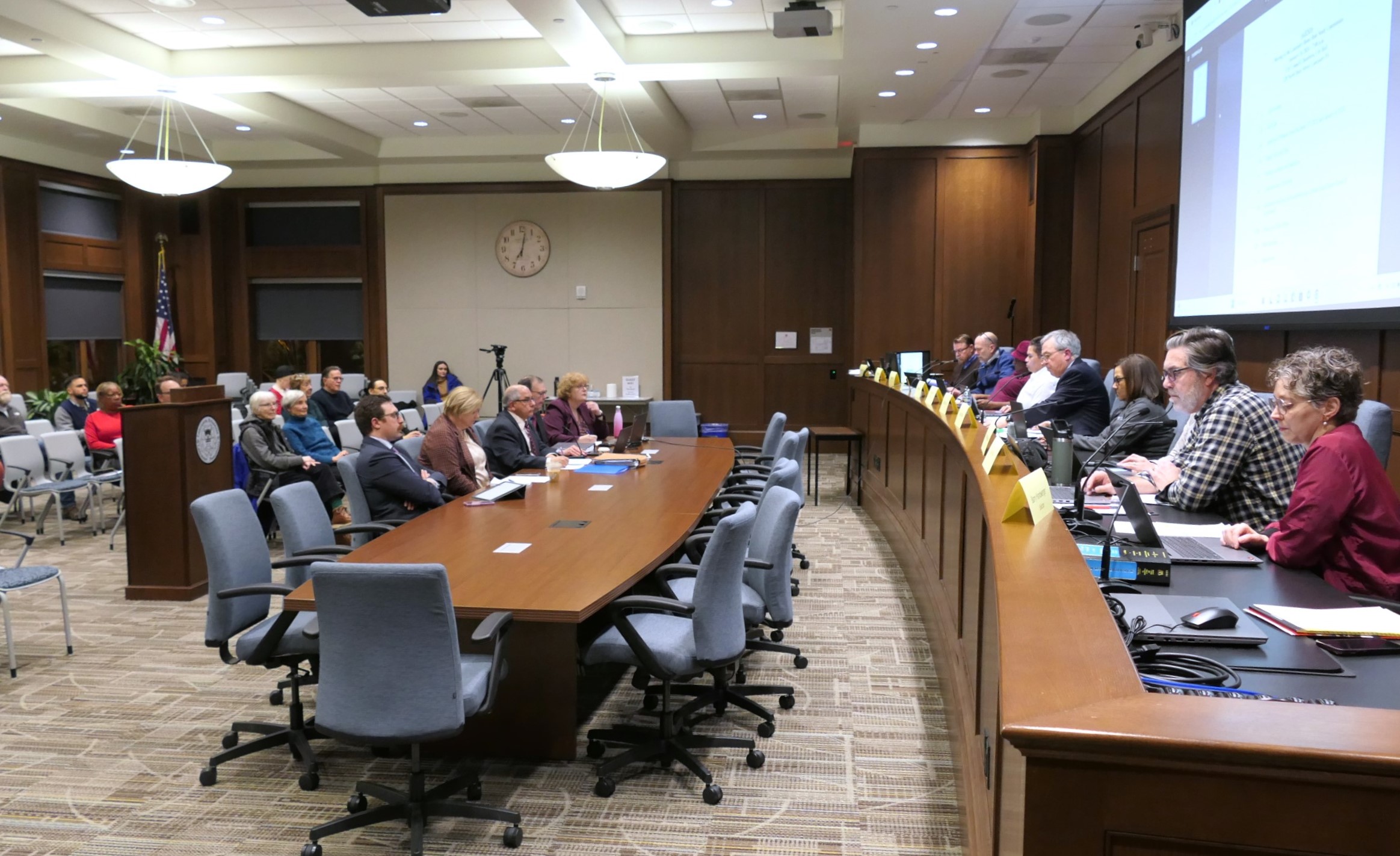Lancaster city’s Home Rule Study Commission devoted the majority of its meeting Thursday evening to a passionate debate on the pros and cons of electing City Council members district-by-district versus choosing them citywide.
The majority of commission members came out in favor of retaining the current at-large system. That provides sufficient consensus to settle the matter for now and move on, said Gerald Cross of the Pennsylvania Economy League, who chaired the discussion so commission Chair Brian Adams could participate.
The issue of districting has been a clear fault line among the commission for months. Members Tony Dastra and member Darlene Byrd contend that it would open the door to more diverse and equitable representation and shake up a system that shuts out dissenting voices.
The question has factored into the discussion of City Council’s size: Commission members have agreed it should have seven members if they are elected at-large, but potentially nine in a by-district or hybrid system.
For more information
To learn more about the Home Rule Study Commission, visit its web page. Online videos of meetings are archived here; upcoming meetings are listed here. To submit feedback, use this form.
The case for change
Byrd, who leads South Ann Concerned Neighbors in Lancaster’s southeast, wants a city government that’s more responsive to ordinary citizens. She called on her colleagues to seize the moment and recognize the power they have to enact not only districting, but other sweeping reforms.
“I think everybody’s afraid of change,” she said, but “we’ve got to try something. … I’m more scared that things stay the same.”
She suggested City Council serve two-year terms rather than four-year ones and be subject to a minimum residency requirement of two years rather than one.
Dastra has proposed a hybrid system providing for the election of nine City Council members: Four at large, four elected by district, and a council president elected in off years. He presented his colleagues with maps he developed to demonstrate that four districts with roughly equal populations could be drawn that broadly correspond to the city’s four quadrants.
Local governments owe it to their constituents to experiment with ways to counter one-party or two-party dominance, he said, calling it a “significant systemic issue.”
Districting could do that, he said, contending it’s easier for an independent to build support in a ward of 15,000 people or so than citywide. Geographic representation matters, too, he said: It’s good when people know they have their own council member to whom they can turn.

‘If it ain’t broke’
During the public comment period at the start of the meeting, community member John Gourveia and former Mayor Rick Gray spoke forcefully against districting. At-large elections have not prevented candidates from the southeast from winning office and serving with distinction, such as Nelson M. Polite Sr. and Ron Ford, they said; nor has it prevented the seating of councils reflecting diversity in race, gender, age and opinion.
Districting would promote “divisiveness rather than consensus,” Gray said. “… If it ain’t broke, don’t fix it.”
Chairman Adams and members Carl Feldman, John McGrann and Peter Barber all endorsed at-large elections. Districting would encourage council members to focus on parochial neighborhood concerns rather than the city as a whole, Feldman said, and could make it harder for renters to hold office, given that a move could shift them out of their district and make them ineligible to continue serving.
Barber said districting could narrow the pool of quality candidates. Byrd and Dastra bristled at the word “quality”; Barber strongly emphasized he was speaking purely in terms of mathematics. Statistically it’s easier to find, say, eight candidates in a pool of 60,000 than to find two candidates apiece in four pools of 15,000. Indeed, Lynne Shedlock of the Pennsylvania Economy League said, in small districts it can be hard to find anyone willing to run at all.
Vice Chair Amy Ruffo described herself as “very conflicted” about districting: It may not be a silver bullet, she said, and if it doesn’t work, it would take another study commission to change it back. Elizabeth Elias and Maxine Cook said they’re leaning toward retaining the at-large system, but remain open to discussing it further.
Adams said he’s studied districting in his capacity as a statistics and computer science professor at Penn State Harrisburg. If the concern is disenfranchising minority parties and third parties, that’s a problem districts can’t solve, he said: You’re always going to have a dominant party and an uphill fight for the rest.
If it’s legal, he said, the commission should consider a system in which, instead of voters having one vote per open City Council seat, they have only one vote overall. That could allow novel coalitions to form and give secondary parties a chance. He also suggested an off-year election for City Council president, as a way for voters to counterbalance a mayor’s agenda, if they so choose.
Moving forward
Thursday’s consensus in favor of at-large elections can be revisited later on as the commission continues drafting the charter. Toward the end of the meeting, Dastra said the group remains “on the fence” about districting and asked that his maps be posted online with the rest of the commission’s materials.
In other business, the commission approved an amended contract with the Pennsylvania Economy League, the nonprofit providing it consulting and administrative support. The arrangement covers March through this coming October.
Through February, PEL received $3,250 per month. That is being boosted to $7,375, reflecting the increasing frequency of meetings and the pace of work now that the commission is engaged in drafting a charter.
The city is paying PEL’s fee on the commission’s behalf through a grant from the Department of Community & Economic Development.
The commission is hoping to finish a draft charter toward late July. The finalized version will be adopted if city voters approve it in a referendum in the November election.






